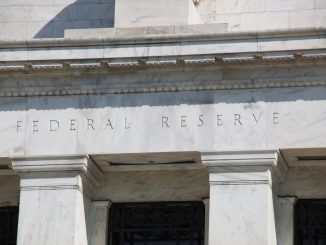The US Federal Reserve just announced the third round of quantitative easing (QE3) by signaling a commitment to keep rates low for a long(er) period of time and engage in additional purchases of assets at a rate of $40 Billion a month.
Reading the press commentary on this move I can see once again the difficulty in making strong and clear economic policy decisions to end the crisis. I do not want to discuss in this post the potential effects of QE3 but simply the way it is being interpreted in the context of the mandate of the US Federal Reserve.
Let me take an example from this morning’s Financial Times: John Authers starts the front-page commentary by saying
“The Federal Reserve did not need to do this. Its dual mandate, to ensure full employment and combat inflation pointed in different directions. Political pressure against taking action (…) was intense”.
At the end of the column, after reviewing the decision of the Fed, the author concludes that the weak US data and the fact that fiscal policy will not do much about it forced the Fed to move
“That is why, by default, the Fed felt it had to do this.”
Notice the different choice of words for the two sentences. The article opens up with the statement that the Fed did not need to do this and then it tells a story of why the Fed felt it had to do it (even if they did not need to do it?).
The dual mandate of the US Federal Reserve is as explicit as it can be even if the precise definitions of full employment and price stability can be open to interpretation. Imagine that inflation had been higher than the implicit or explicit Fed target for several years with an economy at full employment. Would we be saying that the Fed does not need to raise interest rates? No. We would be screaming for the Fed to raise interest rates as aggressively as possible.
The US economy has now been producing at a level which is clearly below its potential for the last four years. The unemployment rate is at levels that are higher than any sensible estimate of the natural unemployment rate. To make matters worse, inflation and inflation expectations have been consistently below the Fed target. How do we go from here to the conclusion that “they did not need to do this”? I can imagine a discussion on the effectiveness of additional quantitative easing measures. Will they have an effect on output and employment? I can see a debate on this question but not on one about the need to find additional ways to effectively stimulate the economy.
- Bulenox: Get 45% to 91% OFF ... Use Discount Code: UNO
- Risk Our Money Not Yours | Get 50% to 90% OFF ... Use Discount Code: MMBVBKSM
Disclaimer: This page contains affiliate links. If you choose to make a purchase after clicking a link, we may receive a commission at no additional cost to you. Thank you for your support!




QEx is like pushing a rope -down- a hill; debt is primarily taken, not given.
Mostly the wrong kinds of folks are biting on these debt bubbles.
The biggest IPO excitement of the past year was Facebook. Facebook employes maybe 3200 people. At its peak, Bethlehem Steel employed well over 300,000 people. Financial services is largely servicing itself. Capital is piling up in cul de sacs, going nowhere, building nothing, employing few. We’ve centrally planned ourselves into the world’s latest gray economies of waiting…
They are so afraid of finally paying the piper for these decades of governmental mismanagement and misappropriation that they keep putting him off with bad checks. We are so far beyond unsightly that it would take a Hubble Telescope to look back at unsightly.